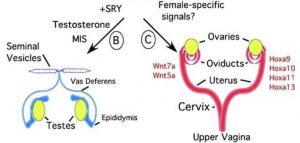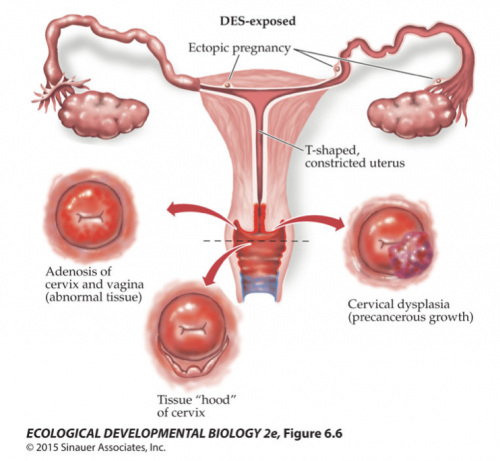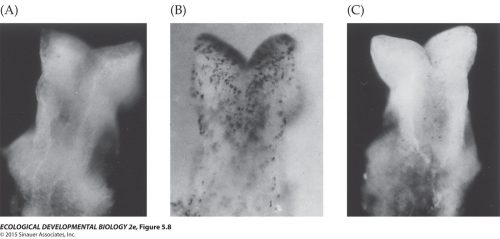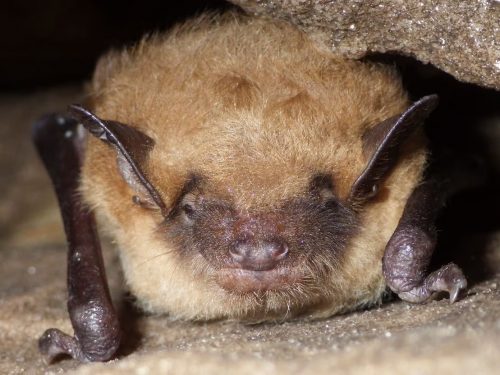Humans are going to go extinct, says the BBC. “Spermageddon!”, says the Daily Mail. Mankind, specifically, faces doom. If it’s not for disappearing Y chromosomes, it’s our plummeting sperm counts. I don’t know, can women do it all alone?
I had to dig through all this garbage last weekend, as I was preparing to spend another week plowing through the endocrine disruption literature, and considering the effects of things like BPA and pesticides on male developmental biology. In particular, the average sperm count has been declining for the past 50 years. The newspapers were all revved up a while ago over this one paper by Levine et al. (2017), “Temporal trends in sperm count: a systematic review and meta-regression analysis”. It really was one paper that triggered it all, despite all the other papers on the subject, because the author was fond of saying things like, “Eventually we may have a problem, and with reproduction in general, and it may be the extinction of the human species.” It is a serious concern, but hyperbole doesn’t help.
Part of the problem was that all of the secondary sources were using the same or similar over-simplified graph from the paper. This one:

(a) Meta-regression model for mean sperm concentration by fertility and geographic groups, adjusted for potential confounders. (b) Meta-regression model for mean total sperm count by fertility and geographic groups, adjusted for potential confounders. Meta-regression model weighted by sperm concentration (SC) SE, adjusted for fertility group, time × fertility group interaction, geographic group, time × geographic group interaction, age, abstinence time, semen collection method reported, counting method reported, having more than one sample per men, indicators for study selection of population and exclusion criteria (some vasectomy candidates, some semen donor candidates, exclusion of men with chronic diseases, exclusion by other reasons not related to fertility, selection by occupation not related to fertility), whether year of collection was estimated, whether arithmetic mean of SC was estimated, whether SE of SC was estimated and indicator variable to denote studies with more than one estimate. Total sperm count (TSC) meta-regression models weighted by TSC SE, adjusted for similar covariates and method used to assess semen volume.
It’s terrible. Here we have a single parameter, sperm count, that can be easily modified by a host of variables: subject age, whether they smoke, time of last ejaculate, disease state, etc., etc., all in many different observations with different protocols, and they’ve crunched it all down to a straight line. I did not believe it. Where are the error bars, for Onan’s sake?
It’s particularly annoying, because when I worked my way back to the original paper, it included this better figure:
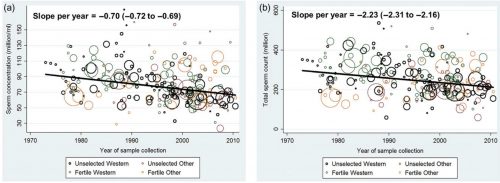
(a) Mean sperm concentration by year of sample collection in 244 estimates collected in 1973–2011 and simple linear regression. (b) Mean total sperm count by year of sample collection in 244 estimates collected in 1973–2011 and simple linear regression.
You could make the valid point that this version is more complicated and doesn’t include all the corrections and adjustments made in the first one, but I’d argue that this one is stripped of the biases of the authors’ interpretations. It still makes the point that sperm counts are going down, but now I can see how noisy the data are.
I also went looking for other articles that assessed the phenomenon, too. For instance, here’s a different 2017 meta-analysis by Sengupta et al. that does a better job of visualizing the data. This, for example, is a bubble plot that illustrates the sample size of each of the constituent data sets.

Temporal decline in sperm concentration (×106/ml) from 1965 to 2015, bubble size corresponds to the number of men in the study.
Look at all that variation! You can see that the earlier studies had much smaller sample sizes, and that the studies ballooned in recent years. If you like more conventional statistical analyses, here’s a box & whisker plot.
That doesn’t lend itself as well to hysterical over-interpretation, of course. That says instead that we should be carefully studying this real problem, rather than freaking out over the imminent extinction of the human species, which isn’t really happening. There’s so much variation in these numbers that we can console ourselves with the fact that even if we personally are functionally sterilized by the chemical bath we’re living in, there are plenty of men still pumping out lots of sperm to step in and fertilize womankind (which is really a terrible perspective on it all.) One paper I read found that rural men were more strongly affected, but that the men of New York Citaay maintained a robust sperm count. That urban men will do the job of maintaining humanity’s numbers is probably not reassuring to readers of the Daily Mail, though.
The point here is not to diminish the reality of the problem — BPA, atrazine, various pesticides, and fracking chemicals are all doing unpleasant things to our masculine (and feminine!) bits, and we should do something about it. We are being poisoned, it’s just not going to drive us to extinction in the near future. Eventually, yes.
Hagai Levine, Niels Jørgensen, Anderson Martino-Andrade, Jaime Mendiola, Dan Weksler-Derri, Irina Mindlis, Rachel Pinotti, Shanna H. Swan (2017) Temporal trends in sperm count: a systematic review and meta-regression analysis. Human Reproduction Update, pp. 1–14, 2017.
P Sengupta, E Borges, Jr, S Dutta, E Krajewska-Kulak (2017) Decline in sperm count in European men during the past 50 years. Human & Experimental Toxicology, https://doi.org/10.1177/09603271177036.





